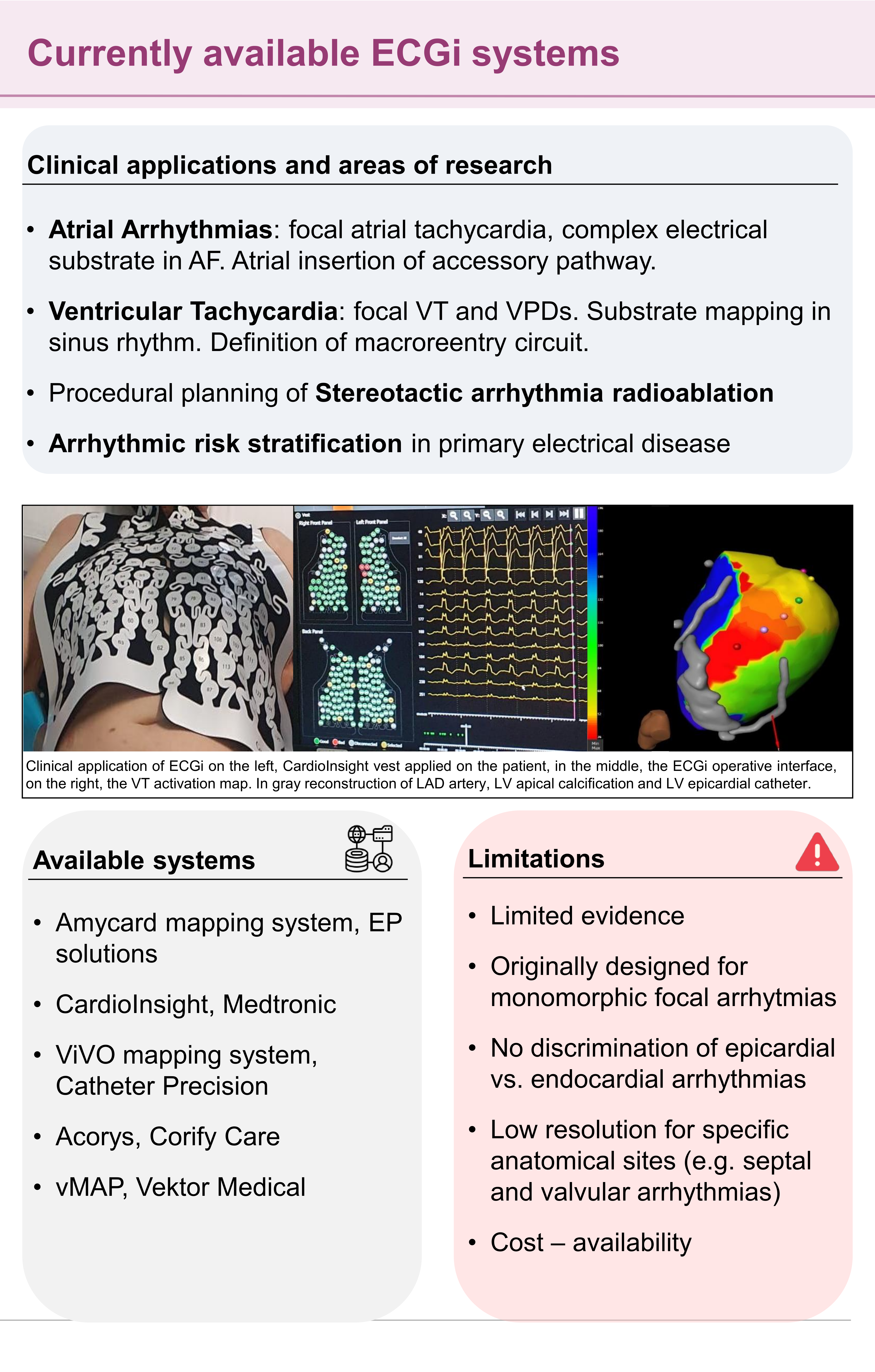- Academic Editor
-
-
-
Electrocardiographic imaging (ECGi) is an innovative noninvasive mapping technique. Indeed, ECGi enables the identification of the earliest points of cardiac activation in both atrial and ventricular focal arrhythmias, as well as rotors and high-frequency domains that could act as potential drivers of atrial fibrillation. Currently, ECGi is most widely used in the management of ventricular tachycardia (VT). Meanwhile, in cases of macro-reentrant arrhythmias, ECGi assists in outlining the re-entry circuit and identifying the myocardial exit site. Additionally, current research is focusing on detecting myocardial scars and critical isthmuses. This information is particularly valuable for planning stereotactic arrhythmia radioablation procedures for VT in patients where invasive electroanatomic maps are unavailable, and a fully noninvasive approach is preferred. The present review aims to examine commercially available options for noninvasive ECG mapping (Amycard, CardioInsight, VIVO, Acorys, and vMAP), highlighting key features and limitations.



